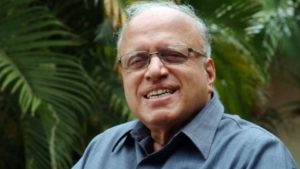Bharat Ratna – ‘Jewel of India’ is the highest civilian award in the country. It is conferred for exceptional Service to the nation in various fields such as Science arts, literature, and recognition of public service of the highest order. The award can be granted posthumously and since its establishment. The award was established by the former President of India Rajendra Prasad on 2nd January 1954.

The first Bharat Ratna was awarded to Sarvapalli Radhakrishnan, Sir C.V. Raman, and Chakravarti Rajagopalachari in 1954.
Sachin Tendulkar is the first sportsperson and the youngest Bharat Ratna Awardee.
The announcement of Bharat Ratna awards for M.S. Swaminathan, P.V. Narasimha Rao, and Chaudhary Charan Singh, alongside two other awardees, marks a significant moment in India’s recognition of their contributions to various fields. The tally of five awardees in a single year, including posthumous honours, underscores the diversity and depth of their achievements.
Monkombu Sambasivan Swaminathan is called the ‘Father of the Green Revolution. He played a major role in the set of changes introduced in farming in the 1960s and ‘70s that helped India achieve food security. It was the time, in 1942 Gandhiji gave a call for the Quit India Movement and in 1942-43, there was the Bengal famine, which saw the deaths of between 2 million and 3 million people. The famine was man-made, the consequence of British policies at the time that were guided by World War II and the need to provide grains to its soldiers from its colonies. Swaminathan decided to go into agricultural research, and that too in genetics and breeding.
Swaminathan’s research took him to educational institutions in Europe and the US, and subsequently in 1954, he started working at the Central Rice Research Institute, Cuttack, on transferring genes for fertilizer response from Japonica varieties to Indica varieties in rice.
This was needed because post-independence, Indian agriculture was not very productive. Years of colonial rule impacted its development and the nation lacked the resources to modernise the sector. As a result, crops necessary for staple foods had to be imported from countries like the US. PL 480.
He started developing semi-dwarf wheat varieties using mutagenesis exposing plants to chemicals to introduce desirable modifications in their DNA but did not work. The lowering of plant heights led to a simultaneous reduction in the size of the grain-bearing earheads. The search for an ideal variety led him to contact American scientist Orville Vogel.
He played a role in developing a ‘dwarf wheat’ called Gaines, which had a high yield. It contained dwarfing genes from a dwarf wheat called the Norin-10. Vogel agreed but was unsure of the wheat’s potential in the Indian climate.
He thus advised Swaminathan to approach Norman Borlaug, who had incorporated the same dwarfing genes through Vogel’s lines into his spring wheat varieties in Mexico that were better suited for India. They developed crops which produces higher yield per hectare compared to traditional variants. They were disease-resistant and had increased tolerance to conditions like drought. Examples include IR8 rice and Kalyan Sona wheat.
When India became independent it was producing about 6 million tonnes of wheat a year. By 1962, wheat production went to about 10 million tonnes a year. But between 1964 and 1968, annual production of wheat increased from about 10 million tonnes to about 17 million tonnes. It was a quantum jump in production, and that is why, it was called a revolutionary step and term Green revolution was coined.
He served as the Independent Chairman of the Food and Agricultural Organisation Council (1981-85), President of the International Union for the Conservation of Nature and Natural Resources (1984-90), President of the World Wide Fund for India. He was awarded first World Food Prize 1988. He established MS Swaminathan Research Foundation in 2002.
He was also elected as President of Pugwash Conferences in 2004, which dealt with diminishing the role of nuclear arms in world politics. He also Chaired the National Commission on Farmers in 2007-2013 in which he recommended that the Minimum Support Price at which farmers sell their crops to the government should be at least 50 percent more than the weighted average cost of production. He Served in Rajya Sabha where he introduced Women Farmers’ Bill.
His Research Foundation (MSSRF), recommended over ₹1,800-crore Kuttanad Package declaring the wetland system a Special Agricultural Zone,‘ protecting water spread areas, modernizing infrastructure, and encouraging short-duration paddy varieties.
Despite its landmark role in achieving food sufficient in India, the Green Revolution has been criticised on multiple counts, such as benefiting the already prosperous farmers as it was introduced in states with higher productivity.
He recognized it while addressing the Indian Science Congress at Varanasi. He spoke of the dangers of “the rapid replacement of numerous locally adapted varieties with one or two high yielding strains in large contiguous areas”, “intensive cultivation of land without conservation of soil fertility (that could), lead ultimately to the springing up of deserts”, “indiscriminate use of pesticides, fungicides and herbicides”, and “unscientific tapping of underground water”. These predictions have indeed become a reality today.
Read also: Why did Monsoon create Havoc in Himachal?